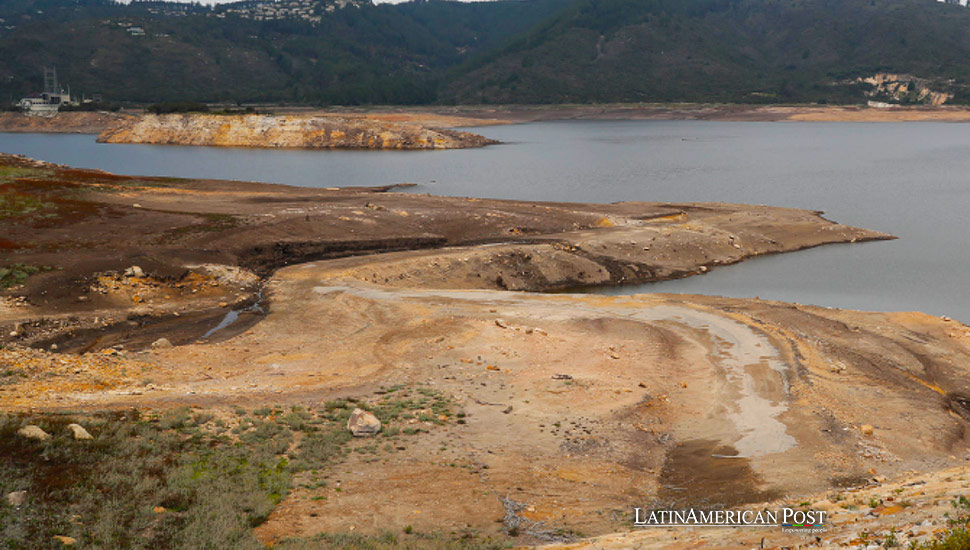Bogota’s Water Rationing Amid Unprecedented Colombia Drought

With El Niño exacerbating a severe drought, Bogota’s ten million residents face water rationing, prompting urgent calls for conservation and a reassessment of urban and agricultural practices.
Bogota, a vibrant metropolis in the Andean highlands, confronts an environmental crisis that echoes across its streets and into the fabric of daily life. Colombia’s sprawling capital, home to about ten million souls, now grapples with a punishing drought that has yet to be seen in decades, forcing a city-wide water rationing.
Water Crisis Intensifies in Bogota
As the El Niño climatic oscillation intensifies, the city’s reservoirs languish at their lowest levels in 40 years, pushing officials to implement a rotating schedule of water cut-offs. The region is carved into nine zones destined to face 24-hour water stoppages. Essential services like hospitals and schools remain shielded from these measures, yet the crisis undeniably staggered the city’s pulse.
The direness of the situation wasn’t lost on Mayor Carlos Fernando Galán as he implored citizens: “Let’s not waste a drop of water in Bogota at this time.” This plea, part of an effort to expedite the lifting of restrictions, comes as a clarion call to unity and conservation.
Yet the problem extends beyond the city’s bounds, weaving into the larger narrative of Latin America’s battle with climate variability. The Chuza reservoir, a lifeline that supplies approximately 70% of Bogota’s water, hovers at a startling 17% capacity. This stark figure is a testament to the abnormal heat and scarce rainfall that have precipitated this acute water scarcity.
Although aware of the long-term ramifications, Colombian President Gustavo Petro advocates for a substantial shift to safeguard water resources over the next three decades. On social media, he chastised unrestricted urban sprawl and decried the exploitation of natural aquifers by industries like agriculture and construction, calling for sustainable management of Colombia’s precious water reserves.
Latin America’s Shared Struggle
This scenario isn’t isolated. Mexico City and Montevideo, Uruguay’s bustling capital, have similarly grappled with water shortages, a stark reminder of the region’s vulnerability to climate phenomena and the pressing need for resilient infrastructure.
Latin America’s encounter with drought is a microcosm of a global climate in flux. While not all droughts stem directly from climate change, the reality is undeniable: a warmer atmosphere is siphoning moisture from the earth at an unprecedented rate, exacerbating the severity and duration of these dry spells.
The world has seen an average temperature rise of about 1.2°C since the dawn of the industrial age. The risks intensify with each fraction of a degree, making the case for drastic emission cuts and proactive climate policies more urgent than ever.
As Latin America stares down the barrel of a warming world, cities like Bogota are on the front lines, wrestling with the immediate threats and the broader implications of human-induced climate change. Once seemingly inexhaustible, the region’s rich biodiversity and vast water resources now demand a vigilant defense.
A Call for Sustainable Practices
Indeed, water scarcity in Bogota has sparked a more profound discourse on sustainability — encompassing everything from personal consumption to public policy, from agricultural practices to urban planning. The need for rainwater harvesting, greywater recycling, and sustainable land use has never been more acute.
This watershed moment calls for innovation as well—new technologies, conservation strategies, and approaches to managing the shared resource that is water. The Andean capital’s response could become a blueprint for other cities facing similar fates.
In this crisis crucible, Colombia can lead by example, demonstrating that with community engagement, policy reform, and international cooperation, the tide can be turned. The nation’s approach to this drought and the broader strategies it adopts for water management will have implications for the entire Latin American region.
As Bogota’s residents navigate their daily routines amidst water rationing, the repercussions of their experience are felt far beyond the city’s boundaries, resonating with the shared concerns and expected future of cities across the continent.
The narrative unfolding in Colombia’s high-altitude capital is a poignant reminder of the interconnectedness of our world — of how local events can be symptomatic of global trends and how local actions can have global impacts.
Also read: Plastics Threaten Malpelo’s Waters in the Colombian Pacific
Looking to the horizon, the hope is that the crisis spurs a watershed moment for Bogota and Latin America—one of ingenuity, solidarity, and a renewed commitment to the environment. As the city adapts to the ebb and flow of its water supply, so must the world adapt to the rhythms of a changing climate, ensuring that water, the lifeblood of civilizations, continues to flow for generations to come.





